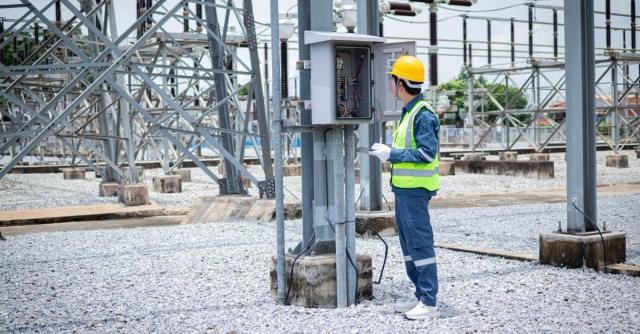High-voltage electrical systems power our modern world, but they demand respect and careful handling. One mistake can lead to catastrophic injuries, equipment damage, or even fatalities. These essential safety practices for managing high-voltage systems aren't just recommendations; they're life-saving protocols that every electrical professional must follow.
Working with high-voltage electricity requires specialized knowledge and unwavering attention to detail. Let's explore the critical practices that keep electrical workers safe and systems operational.
Personal Protective Equipment Standards
Proper protective gear serves as your first line of defense against electrical hazards. Arc-rated clothing, insulated gloves, and safety helmets with face shields form the foundation of electrical safety. Each piece of equipment must meet specific voltage ratings and undergo regular testing to maintain its protective qualities.
Dielectric boots provide ground isolation, preventing dangerous current paths through your body. Never compromise on PPE quality; your life depends on equipment that meets or exceeds industry standards.
Lockout/Tagout Procedures
Energy isolation protects workers from unexpected system activation during maintenance. LOTO procedures require physically disconnecting power sources and securing them against accidental re-energization. Multiple locks and tags create redundancy, preventing any single person from accidentally restoring power while others work on the system.
Additionally, minimizing arc flash hazards requires treating every circuit as live until proven otherwise through proper testing procedures. Team communication becomes vital during LOTO implementation, with clear protocols for shift changes and emergency situations.
Voltage Testing and Verification
Assumption results in grave risks in electrical work. Proper voltage testing uses calibrated instruments to confirm circuit status before any hands-on work begins. Test equipment must have current calibration certificates and appropriate voltage ratings for the systems being checked. The "test-before-touch" mentality prevents countless accidents each year.
Implement multi-point testing to verify that voltage readings are consistent across all phases and conductors. Consider using ground fault detection equipment as well, as it identifies potential shock hazards that standard voltage meters might miss.
Safe Work Distance Protocols
Approach boundaries define safe working distances based on voltage levels and worker qualifications. Qualified personnel can work closer to energized equipment, but only with proper training and protective measures. Unqualified workers must maintain greater distances to prevent accidental contact with live circuits.
Barrier systems and warning signs create visual reminders of these hazardous areas. Weather conditions also affect safe working distances, with wet conditions requiring increased clearances from energized equipment.
Moving Forward Safely
These essential safety practices for managing high-voltage systems save lives every day through consistent application and continuous improvement. These protocols aren't burdensome regulations; they're proven methods that allow electrical professionals to return home safely each day. Implementing a safety-first culture starts when leadership prioritizes protection over productivity shortcuts. Remember to always invest in proper equipment and training to reduce accidents and improve system reliability.






